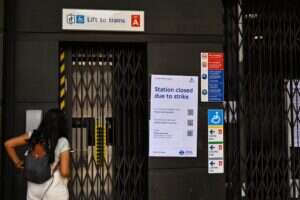Britain’s roads have given priority to buses for more than 40 years, through everything from bus-only gates to lengths of bus lane on busy roads. For passengers, these measures are a godsend, making it much easier for bus companies to provide quick and reliable journeys.
But not everybody agrees. Liverpool City Council recently abandoned all but four of its 26 bus lanes; and other UK cities are reported to be considering following Liverpool’s lead. In Belfast, ex-mayors have queued up to show support for a change in the system after reports of traffic bottlenecks and bus lanes lying empty.
Yet removing bus lanes entirely could be a recipe for disaster. “Freeing” important corridors for all traffic will only entice more cars into already congested town and city centres, which will adversely affect the environment and character of these places. A modern double-deck bus offers more than 70 seats, in a vehicle with a footprint little larger than three or four cars – cars that, at peak times, often only have a single occupant. It makes sense that the bus passengers should enjoy some sort of advantage.
There’s room for improvement, however, in the implementation of the lanes themselves. Bus lanes tend to be most valuable at weekday peak hours – yet some of Britain’s cities have opted for 24-hour lanes in an attempt to encourage public transport use and restrict car movements. Equally, bus lanes don’t have to cover entire routes – often, a tiny stretch of bus priority at a pinch-point can give buses an advantage over other traffic.
Several of Britain’s most historic cities, including Cambridge, Edinburgh and Oxford, discourage car use in their centres by a combination of peripheral park-and-ride sites, bus priority measures and prohibitive charges for a limited number of parking spaces. Yet there are still places that make it easy for cars to access city centres.
In the absence of sensible parking controls and, yes, bus lanes, roads in these places could soon clog up to the detriment of quality of life. This in turn could encourage people to abandon these city centres and look for alternative places for shopping and leisure, like out-of-town malls, which would impact on the economy of these cities.
Bus passengers are as important as car passengers, and contribute greatly to the economy of our towns and cities. Scrapping bus lanes is a retrograde step. Cities that fail to recognise this, and fail to acknowledge the importance of encouraging good public transport, could well suffer as a result.
Gavin Booth is director of Bus Users Scotland.






